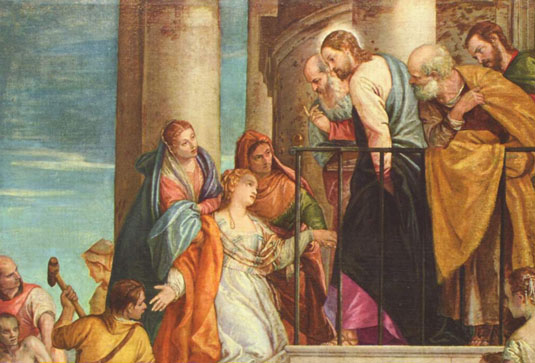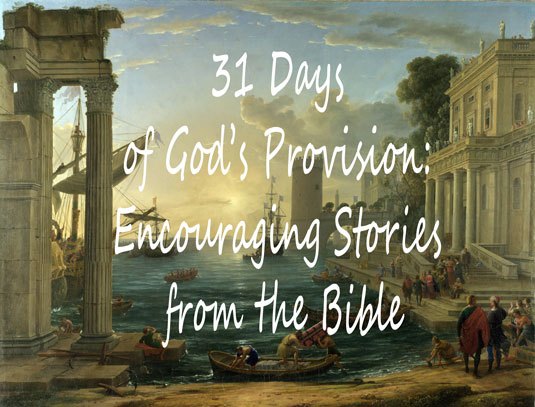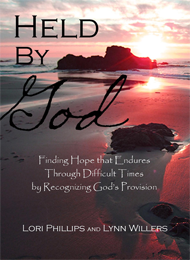 The story of the bleeding woman takes place during the ministry of Jesus and is found in three of the four gospels in the New Testament. For twelve years this woman had suffered from an irregular menstrual condition, which caused her to bleed beyond the confines of her monthly cycle. She had consulted with many doctors, endured many treatments, had spent all her money, but her condition continued to deteriorate. The passage doesn’t describe her emotional state, but we can guess that she is desperately hopeless.
The story of the bleeding woman takes place during the ministry of Jesus and is found in three of the four gospels in the New Testament. For twelve years this woman had suffered from an irregular menstrual condition, which caused her to bleed beyond the confines of her monthly cycle. She had consulted with many doctors, endured many treatments, had spent all her money, but her condition continued to deteriorate. The passage doesn’t describe her emotional state, but we can guess that she is desperately hopeless.
And a woman was there who had been subject to bleeding for twelve years. She had suffered a great deal under the care of many doctors and had spent all she had, yet instead of getting better she grew worse. Mark 5:25-26, NIV
Then she hears of a man who might change her circumstances. But does she dare hope that he will? Does she dare take the risk of being found out?
When she heard about Jesus, she came up behind him in the crowd and touched his cloak, because she thought, “If I just touch his clothes, I will be healed.” Mark 5:27-28, NIV
The accounting in the Gospel of Luke describes the object of her touch with a bit more detail.
She came up behind him and touched the edge of his cloak… Luke 8:44a, NIV
In the original Greek, the word for edge is actually translated “tassel” or “fringe.” The Israelites were commanded to put tassels on their garments to remind them to obey the commandments of the Lord.
The Lord said to Moses, “Speak to the Israelites and say to them: ‘Throughout the generations to come you are to make tassels on the corners of your garments, with a blue cord on each tassel. You will have these tassels to look at and so you will remember all the commands of the Lord… Numbers 15:37-39a, NIV
As the woman approached Jesus, it would have been just such a tassel that she would have had her eye on. But in order to get close enough to touch the tassel, she would have to weave herself through the crowd surrounding him. Could she do it? What if someone recognized her?
Under the law, there were certain rules put in place to keep the people safe from biological and other hazards. Some of these laws concerned a woman’s monthly cycle, whereby she would segregate herself during her period. The law included a provision that would extend this time of segregation, should she continue to menstruate beyond her normal monthly flow. In this woman’s case, she had been bleeding for twelve years, so she had been segregated from other people for a long time.
Under the law, her prolonged bleeding caused her to be labeled unclean. While this might sound harsh or even severe to us today, the people in her time did not have the benefit of our understanding of blood-borne pathogens. There were no antibiotics or antiseptic soap. God provided laws about hygiene to protect the people from disease. But, because of her status, she was forbidden to mingle with people. She was to keep herself set apart from the population, for anyone who did touch her, would also be considered unclean.
To approach Jesus, she would have to become part of the crowd surrounding him. This would cause other people to inadvertently touch her. Likewise, when she reaches out to touch Jesus, she knows that by doing so, she will be breaking the law. She had to choose between her own desperation and following the law. It was a big risk. Following the law would mean bypassing the opportunity to be healed and a life of continued suffering. Breaking the law could bring healing or it could bring punishment and further separation from her community if she were to be discovered.
She musters up her courage, and gently pushes through the crowd until she is close enough. Then she drops to her knees and crawls the last few feet. The hem of his cloak is in sight. She can see it. She’s almost there. She reaches out. She holds her breath. For a brief moment it seems as though time has stood still, as she feels the tassel in her small hand and her fingers close around it.
Immediately her bleeding stopped and she felt in her body that she was freed from her suffering. Mark 5:29, NIV
Jesus moves and the tassel slips out of her hand. It worked. She is well. She can feel it—and apparently she isn’t the only one.
“Who touched me?” Jesus asked. When they all denied it, Peter said, “Master, the people are crowding and pressing against you.” But Jesus said, “Someone touched me; I know that power has gone out from me.” Luke 8:45-46, NIV
He knows. She thought she could just slip into the crowd unseen, but Jesus knows she’s there. And he knows what has just happened. She should speak up, but what will be the consequence if she does?
Then the woman, seeing that she could not go unnoticed, came trembling and fell at his feet. In the presence of all the people, she told why she had touched him and how she had been instantly healed. Luke 8:47, NIV
Jesus had called her out of the crowd, and now everything she’d tried to keep secret is known to all. Will he punish her for breaking the law? As a Jew, Jesus is very familiar with the law, and has every right to publicly berate her. Still on her knees, she waits for his response.
He said to her, “Daughter, your faith has healed you. Go in peace and be freed from your suffering.” Mark 5:34, NIV
He called her “daughter.” What is remarkable about this term of endearment is that the Bible does not record Jesus addressing any other woman in this way. She was the only one. Society had rejected this woman, but Jesus found her worthy of his attention. Society had abandoned her, but Jesus addressed her as family.
Jesus was personally involved in her story. He knew that her condition affected every aspect of her life, and showed that he cared about her suffering. He also knew the tremendous risks she had taken to reach him. But perhaps the most important point is that he praised her for her faith, affirming to the crowd, that her trust in him was well placed. Hers was an example of faith against all odds. In a mustard seed moment, she lived her faith, and Jesus healed not only her body, but her heart as well.
The Bleeding Woman’s story was one of sickness, but God’s provision was one of healing.
Join me tomorrow for a story involving a stealth visit, a question of biology, and a provision of clarity!
 If you’ve missed any part of this series, you can find all of the posts in the side bar category 31 Days of God’s Provision.
If you’ve missed any part of this series, you can find all of the posts in the side bar category 31 Days of God’s Provision.
On the journey toward Home,












{ 1 trackback }